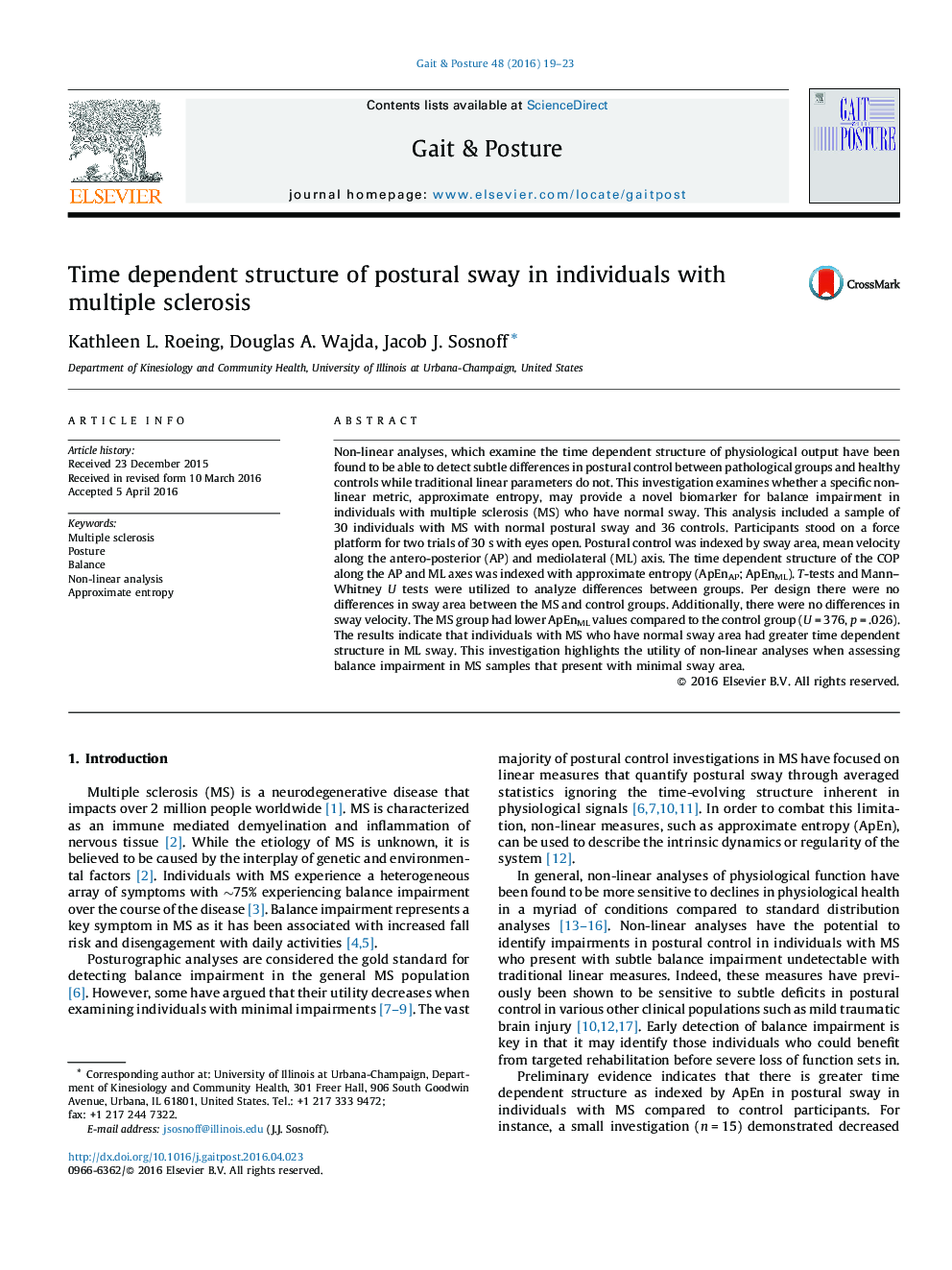| Article ID | Journal | Published Year | Pages | File Type |
|---|---|---|---|---|
| 4055773 | Gait & Posture | 2016 | 5 Pages |
•Postural control was examined in a minimally impaired sample of persons with MS.•Approximate entropy measures identified differences undetected by velocity.•Impairment in the MS sample was only in the mediolateral direction.•Complexity measures have high utility in detecting subtle impairments in posture.
Non-linear analyses, which examine the time dependent structure of physiological output have been found to be able to detect subtle differences in postural control between pathological groups and healthy controls while traditional linear parameters do not. This investigation examines whether a specific non-linear metric, approximate entropy, may provide a novel biomarker for balance impairment in individuals with multiple sclerosis (MS) who have normal sway. This analysis included a sample of 30 individuals with MS with normal postural sway and 36 controls. Participants stood on a force platform for two trials of 30 s with eyes open. Postural control was indexed by sway area, mean velocity along the antero-posterior (AP) and mediolateral (ML) axis. The time dependent structure of the COP along the AP and ML axes was indexed with approximate entropy (ApEnAP; ApEnML). T-tests and Mann–Whitney U tests were utilized to analyze differences between groups. Per design there were no differences in sway area between the MS and control groups. Additionally, there were no differences in sway velocity. The MS group had lower ApEnML values compared to the control group (U = 376, p = .026). The results indicate that individuals with MS who have normal sway area had greater time dependent structure in ML sway. This investigation highlights the utility of non-linear analyses when assessing balance impairment in MS samples that present with minimal sway area.
